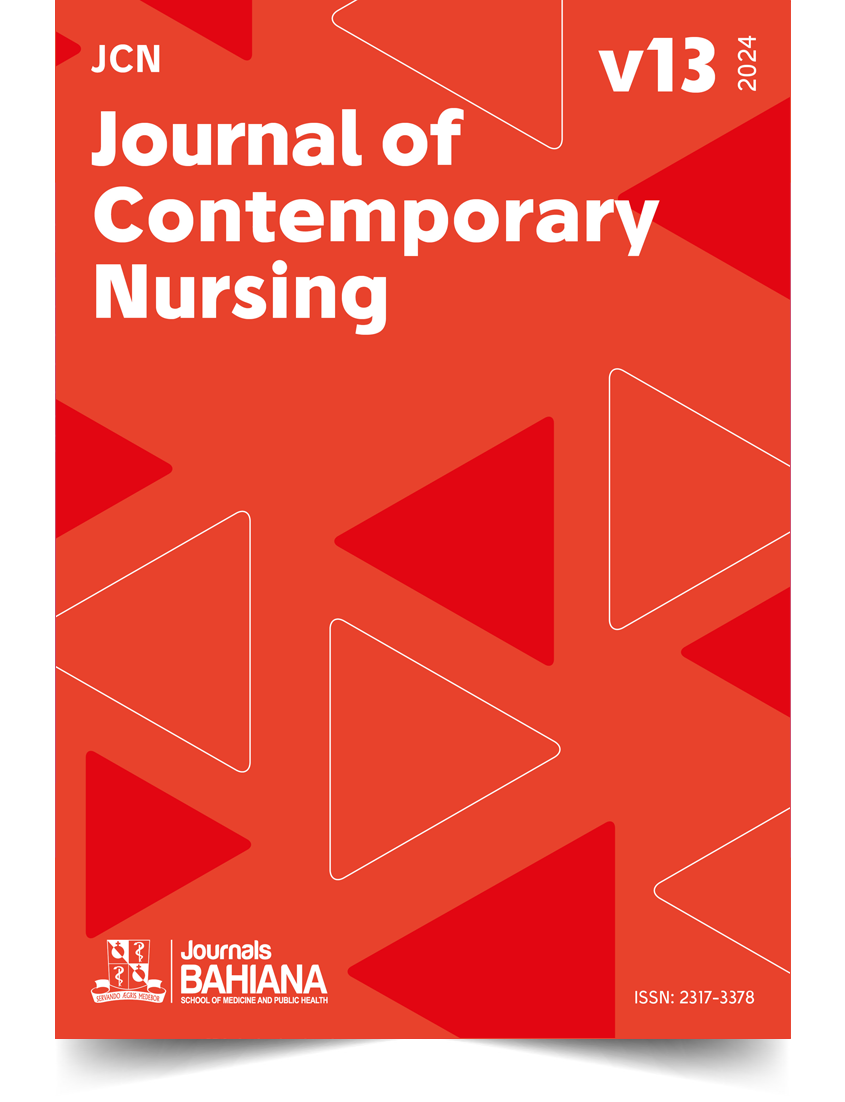Prevalence and factors associated with the sepsis continuum in an adult intensive care unit
DOI:
https://doi.org/10.17267/2317-3378rec.2024.e5743Keywords:
Infections, Sepsis, Septic Shock, Intensive Care Units, NursingAbstract
ABSTRACT | OBJECTIVE: To verify the prevalence of infection, sepsis and septic shock and factors associated with these conditions in patients admitted to an Adult ICU of a hospital in the interior of Brazil. METHODS AND MATERIALS: Cross-sectional, retrospective and documentary study, in an Adult ICU in the interior of Rio Grande do Sul, Brazil. Sample of 259 medical records from 2016 to 2018. Data collection using a structured instrument and descriptive and multivariable analyses. RESULTS: It was shown that 19.3% of patients had infection, 17% had sepsis and 10.8% had septic shock. Most women (59.1%), between 51 and 64 years old (27.3%), with hypertension (36.4%) and diabetes (26.1%). 96.6% received antibiotic therapy, but only 50% collected cultures. CONCLUSIONS: The prevalence of the sepsis continuum in the ICU was 33.9%; and the associated factors are the use of enteral tubes, central venous catheters, mechanical ventilation and cardiology and pulmonology specialties.
Downloads
References
(1) Instituto Latino Americano de Sepse (ILAS). Implementação de protocolo gerenciado de sepse. Protocolo clínico. Atendimento ao paciente adulto com sepse/choque séptico. São Paulo; 2018. Available from: https://ilas.org.br/wp-content/uploads/2022/02/protocolo-de-tratamento.pdf
(2) Hajj J, Blaine N, Salavaci J, Jacoby D. The "Centrality of Sepsis": A Review on Incidence, Mortality, and Cost of Care. Healthcare. 2018;6(3):90. https://doi.org/10.3390/healthcare6030090
(3) Westphal GA, Pereira AB, Fachin SM, Barreto ACC, Bornschein ACGJ, Caldeira Filho M, et al. Characteristics and outcomes of patients with community-acquired and hospital-acquired sepsis. Rev bras ter intensiva. 2019;31(1):71-8. https://doi.org/10.5935/0103-507X.20190013
(4) Sakr Y, Jaschinski U, Wittebole X, Szakmany T, Lipman J, Ñamendys-Silva SA, et al. Sepsis in Intensive Care Unit Patients: Worldwide Data From the Intensive Care over Nations Audit. Open Forum Infect Dis. 2018;5(12):ofy313. https://doi.org/10.1093/ofid/ofy313
(5) Rudd KE, Johnson SC, Agesa KM, Shackelford KA, Tsoi D, Kievlan DR, et al. Global, regional, and national sepsis incidence and mortality, 1990–2017: analysis for the Global Burden of Disease Study. Lancet. 2020;395(10219):200-11. https://doi.org/10.1016/S0140-6736(19)32989-7
(6) Markwart R, Saito H, Harder T, Tomczyk S, Cassini A, Fleischmann-Struzek C, et al. Epidemiology and burden of sepsis acquired in hospitals and intensive care units: a systematic review and meta-analysis. Intensive Care Med. 2020;46(8):1536-51. https://doi.org/10.1007/s00134-020-06106-2
(7) Neira RAQ, Hamacher S, Japiassú AM. Epidemiology of sepsis in Brazil: Incidence, lethality, costs, and other indicators for Brazilian Unified Health System hospitalizations from 2006 to 2015. PLOS ONE. 2018;13(4):e0195873. https://doi.org/10.1371/journal.pone.0195873
(8) Silva FMSF, Nascimento MEB, Laurindo ACA, Ferreira JAB, Lima NL, Gois TS, et al. Cuidados em terapia intensiva e desenvolvimento de protocolos para sepse. Brazilian Journal of Implantology and Health Sciences. 2024;6(3):1563-7. https://doi.org/10.36557/2674-8169.2024v6n3p1563-1573
(9) Zhang H, Zhang Y, Wu J, Li Y, Zhou X, Li X, et al. Risks and features of secondary infections in severe and critical ill COVID-19 patients. Emerging Microbes & Infections. 2020;9(1):1958-64. https://doi.org/10.1080/22221751.2020.1812437
(10) Seymour CW, Liu VX, Iwashyna TJ, Brunkhorst FM, Rea TD, Scherag A, et al. Assessment of clinical criteria for sepsis for the third international consensus definitions for sepsis and septic shock (Sepsis-3). JAMA. 2016;315(8):762-74. https://doi.org/10.1001/jama.2016.0288
(11) Moretti MMS, Urbanetto JS, Nascimento AP, Rodrigues AG, Silva DR, Ramos T, et al. Sepsis and AMI: knowledge of the population visiting parks and patient companions. Rev. Gaúcha Enferm. 2019;40:e20180299. https://doi.org/10.1590/1983-1447.2019.20180299
(12) Filho CAL, Marinho CMM, Santos MDP. Risk factors in patients with sepsis in intensive care units: An integrative review. REAS. 2018;19:e208. https://doi.org/10.25248/reas.e208.2019
Downloads
Published
Issue
Section
License
Copyright (c) 2024 Caroline Monteiro Bittencourt, Josefine Busanello, Lucas Pitrez Mocellin, Ana Paula de Lima Escobal, Raquel Potter Garcia, Deisy Mello de Pinto

This work is licensed under a Creative Commons Attribution 4.0 International License.
This work is licensed under a Creative Commons Attribution 4.0 International License.



